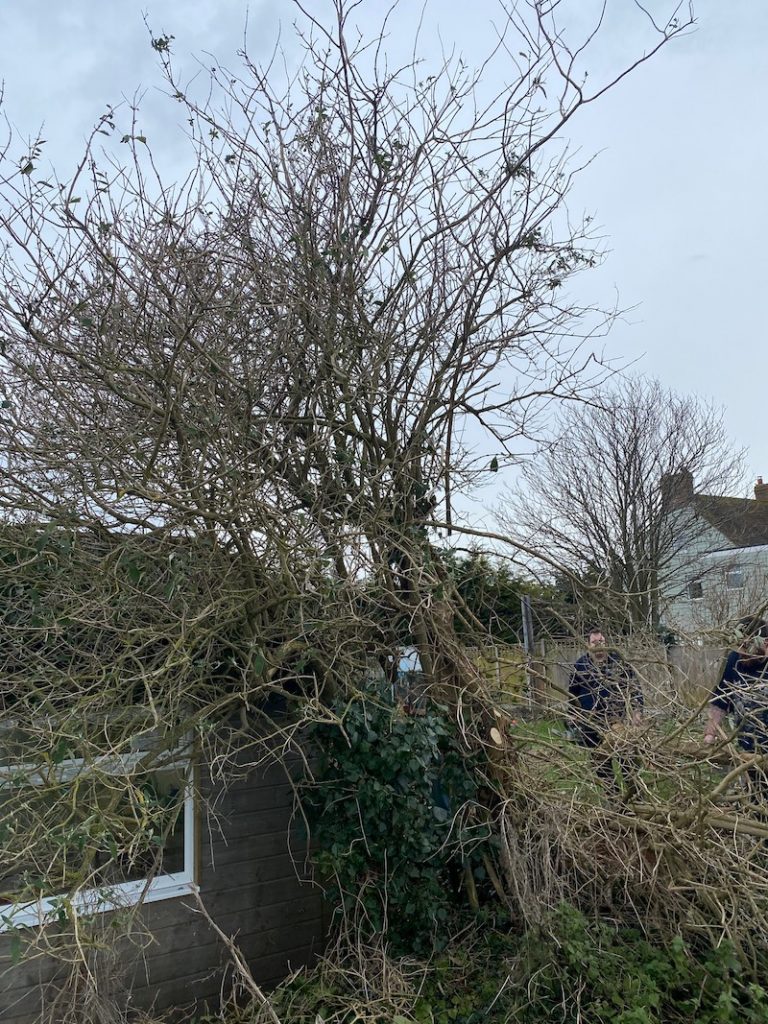Sometimes a tree is in the wrong place or in this case, right where a fence should be. A neglected property resulted in a tree growing right on the boundary where it was necessary to install a fence. One way or another, regrettably we do need to remove trees. One of the most important things to consider when removing a tree is safety. There are so many things that can go wrong so more than discuss technique, I wanted to alert you to the potentially pitfalls so that you can plan accordingly and remove a tree safely.
In the case I am covering today you can see the tree has been left to grow. Speaking plainly, the owner simply didn’t look after his property and that becomes a spiral because an overgrown garden is impossible to manage. As a result there’s an Ivy growing up the back of the shed onto the roof. If you have a similar problem, I have made an article about removing Ivy from walls and roofs to help. The tree has now grown dangerously over the shed roof too and so we will go through the careful steps you can take to safely fell a tree to minimise damage to the property.
1. Gather the tools you’ll require
2. Cut off the thinner branches with a hedge trimmer or garden multi tool.
3. Use a bow saw or chainsaw to take the tree back to a trunk.
4. Top the tree where safe to do so or cut it and pull it over
1. Gather the tools you’ll require
Felling a tree is made easy when you have the proper equipment, and specifically safety equipment. To fell a mid sized tree easily I make use of:
– My trusty Makita cordless battery chainsaw
– Garden Multi Tool
– Cordless pole hedge trimmer
– Good quality rope at least 10mm thick double up
– Chainsaw safety clothing
– Tripod ladders
If you don’t have a myriad of power tools then you’ll want:
– Garden shears
– Garden loppers
– A hand saw or bow saw
– The rope
– A sturdy set of steps or tripod ladders
The clean up is pretty obviously, you’ll want a standard garden rake and some sacks.
2. Cut off the thinner branches with a hedge trimmer or garden multi tool.
The key to safely felling a tree (certainly medium sized anyway) is removing it piece by piece, working your way back to the trunk so that when you fell it, it is as easy to manage as possible. Use your pole hedge trimmer or garden loppers to cut off the branches that the respective tools can handle. It goes without saying the long reach pole hedge trimmer will be much more effective, but then you’ll need to spend money. If you’ve got garden loppers and this is a one-off use them.
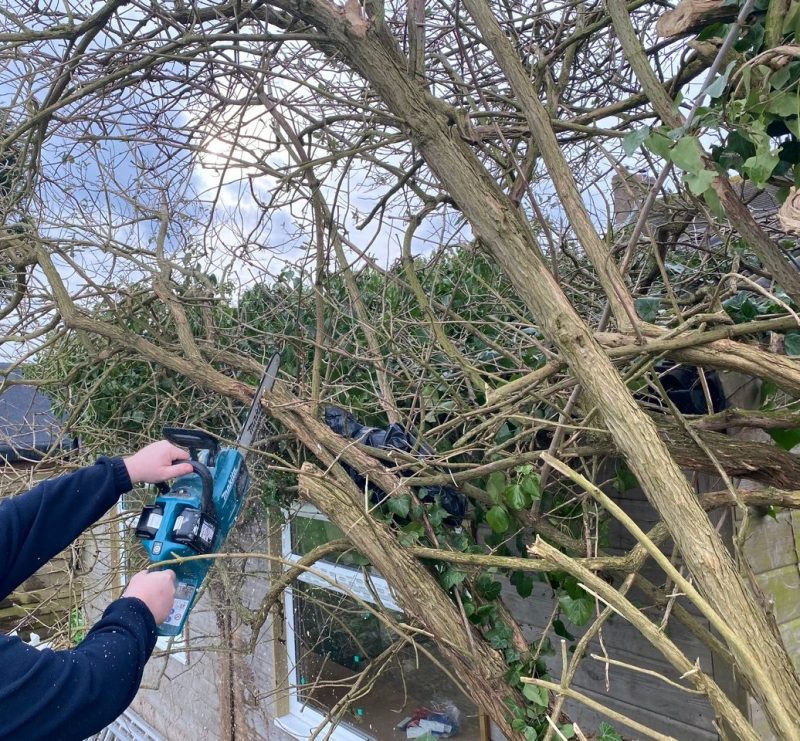
Carefully work your way back and up the tree so that when you top it, it is more manageable, as you can see from the picture, this tree like many is pretty regular in shape and we are just working our way back on it.
3. Use a bow saw or chainsaw to take the tree back to a trunk.
Any thick branches that could not be removed should not be finished off with a bow saw or your chainsaw. When using a chainsaw it’s important to realise that this is one of the most dangerous pieces of equipment you can use in the garden. What I do when using my Makita chainsaw, is carefully follow the user manual for safety:
https://media.makita.co.nz/_media/user-manuals/D/DUC303-UG.pdf
Download the user and safety manual here too for convenience. If this is your first time, I would highly recommend fully understanding how to use a chainsaw properly.
I personally don’t wear chainsaw trousers, I just wear strong jeans. But if you follow the safety guidelines you should. I do wear goggles and gloves.
Just nip away at anything in reach back to the trunk slowly and methodically. I actually went up on the shed roof as it’s solid. Inside of the shed is insulated and boarded with 18mm OSB so no fear of coming through the roof. I mention this because an asphalt corrugated sheet rood is generally not suitable to stand on.
You’ll be left with something like this:
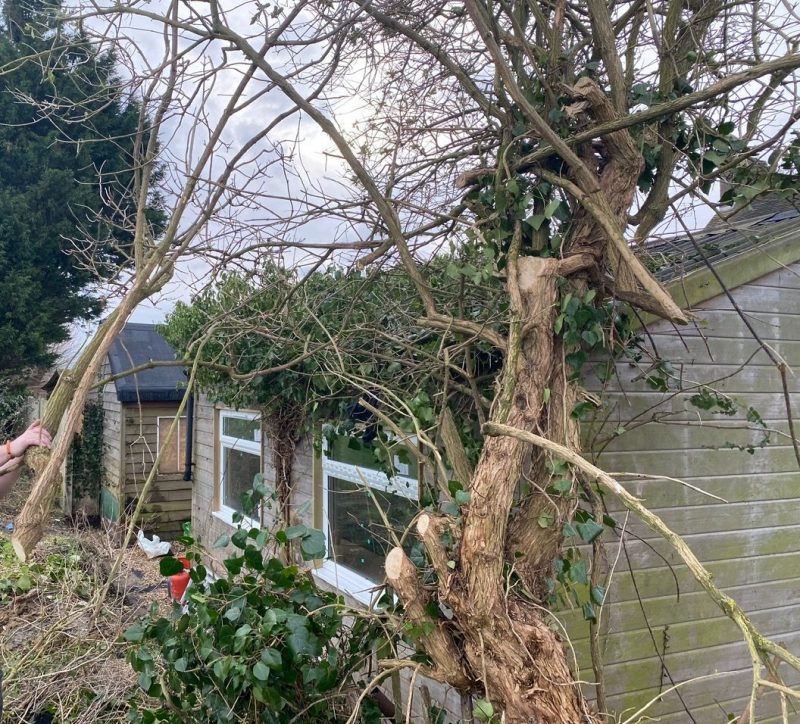
4. Top the tree where safe to do so or cut it and pull it over
You need to make a decision as to whether you want to top the tree first or not. I decided not to for two reasons. We are two strong blokes and I was confident that the remaining weight of the tree could be pulled safely. Also, many mishaps occur up a ladder topping trees, so all in all, we decided to cut it carefully.
Firstly, you’ll want to tie the rope high up on the tree. This gives your helper the maximum ability to pull in the direction you want through leverage. Tie the rope well and then ask them to take the slack just in case your first notching I describe below doesn’t go to plan.
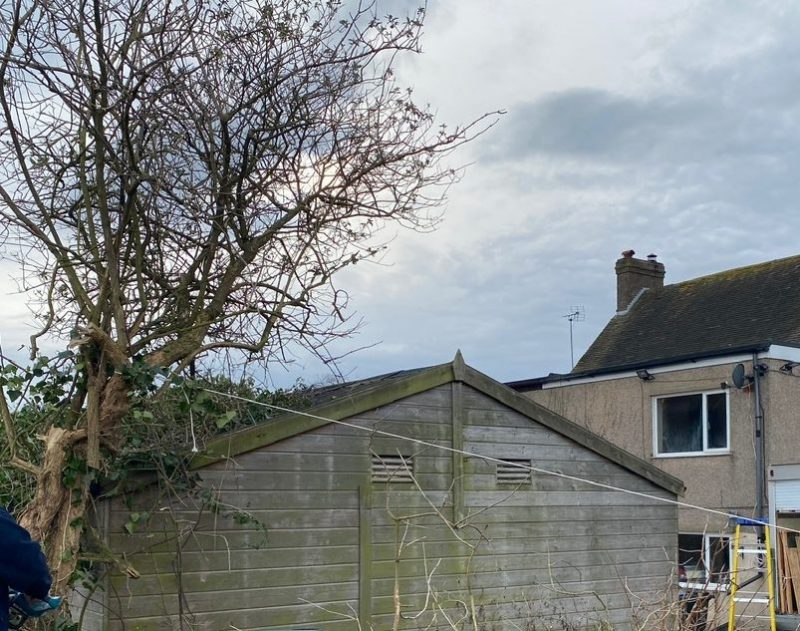
When cutting a tree, notch it out the direction you want it to fall first. I normally go just under half way if the tree is upright and balanced as this generally won’t cause it to break or fall. On this tree, the lower stump pointed at the shed, so I came up a little higher where the lean was better. We can always cut the stump after.
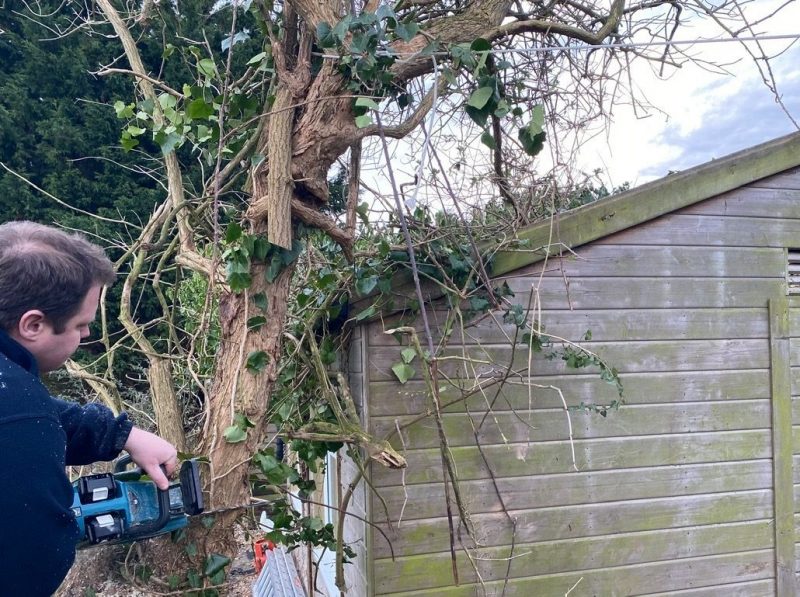
Here’s a good look at the cut. This helps force the tree in combination with your rope the way you want it to fall far more easily.
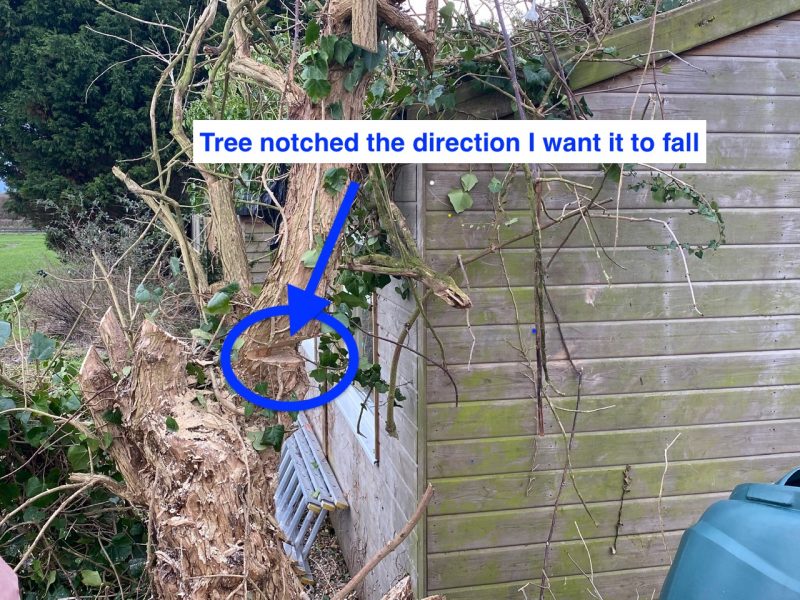
As you can see I then notch the tree the other side at an angle that make a ‘kind of cup’ that assists the tree falling the right way. Here’s a short video once notched of cutting the tree and felling it:
Obviously if you’re not entirely sure and do not feel safe then DO NOT DO IT. Be sure you are competent. If you don’t have a chainsaw, the same rule applies with a bow saw.
Clean up after felling your tree
Needless to say in my example the shed roof needed cleaning up, and there were branches everywhere. A clean garden is a safe garden. You could run the green waste down the tip or use a wood chipper or garden shredder (I’d probably recommend a Bosch Garden Shredder at the moment) to make some mulch that’ll benefit the garden.
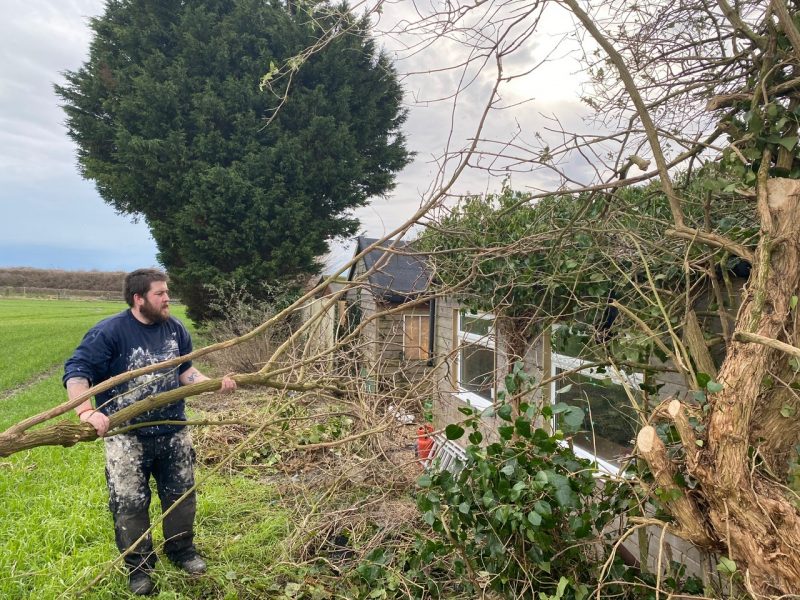
Then you’ll want to consider how to remove the remaining stump and roots or kill the tree so that it rots and can be removed more easily. If you have the energy then digging the stump out is just fine. I would have an axe, garden fork, and a spade, slowly digging into the ground around the stump and then ‘lifting it up and out’ using the axe to cut roots that are too thick to pull up with the stump. The other alternative is to kill a tree and wait it out. I covered that nicely in an article already if you’re interested.
